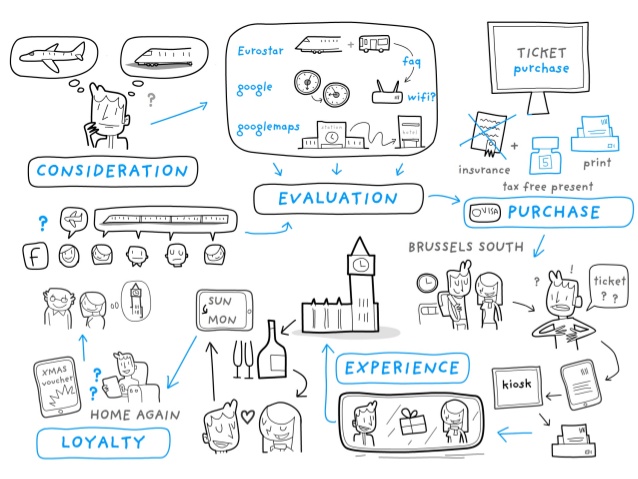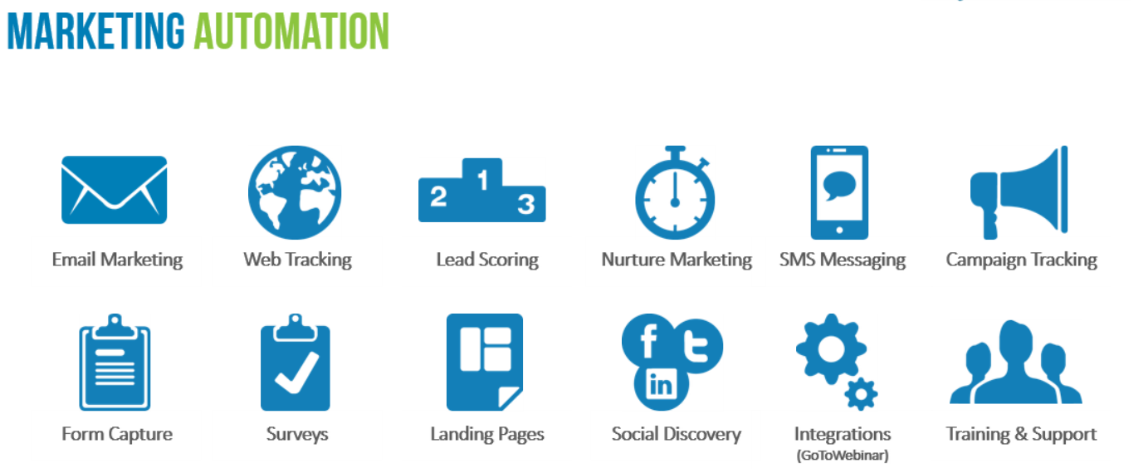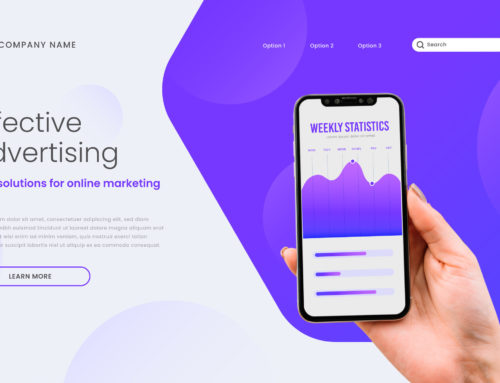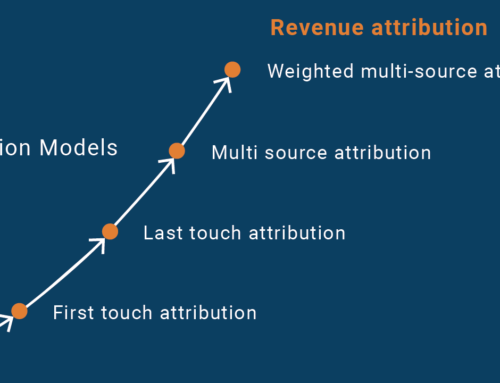It’s easy to see B2B and B2C marketing as completely different animals.
After all, that’s how their customers have behaved over the years.
The common thinking: it’s easier to sway B2C customers with media, ads, and special offers. They care about brands, but most of the time, switching between them is not a big deal if they’re not happy with their experience.
B2B customers, on the other hand, do extensive research. They care about the technical specs of your product. If they decide to buy, it’s often done through a formal procurement process. Once they become your customer, they tend to stick with you for a longer time because switching to a different provider can disrupt their workflow.
This explains why B2B has moved slower than B2C sales in responding to changing technologies, trends, and customer preferences…
However, continuing along that slower path today leads to some serious missed opportunities.
Traditional B2B strategies – from cold calling and direct mail to relying on word-of-mouth referrals – still have their place and can be effective. But you can supercharge your sales if you’re willing to integrate a few new concepts to help you adjust to today’s rapidly-changing B2B environment.
Photo credit: Deathtostock
Changing Technologies, Tastes, and Customer Behavior
The world of B2B sales looks completely now. It’s amazing how much has changed in just a few years.
How?
For one thing, the Internet turned B2B research from a dictatorship into a democracy. More information is available now than ever before. Accessing it is simple. And there are countless sources to consider (and more emerging every day) instead of just what people hear from your sales reps.
This has had a huge impact on the sales process. B2B prospects are contacting sales reps much later on in the process. Today, the typical B2B prospect has already completed between 50 and 80% of their journey to becoming a customer… before they reach out to your team. Where we used to have control of the interactions as our sales teams led people step by step, that’s no longer the case.
The result?
B2B customer behavior looks more like B2C customer behavior than ever. The bright lines between them have started to blur. Businesses that respond to this monumental shift position themselves to increase their conversions.
How to Adapt and Make More B2B Sales
If you’re looking to tighten up your sales process and bring in more revenue, it starts by understanding the key concepts shaping the new B2B landscape:
1. Embrace “Messier,” Non-Linear Customer Journeys
The biggest difference between B2B customer journeys now and in the past: today’s journeys are much less linear.

Image credit: Cegeka via SlideShare
I already mentioned how B2B customer behavior is tracking closely with B2C customer behavior. Those changes have brought increased expectations. Prospects expect sales reps to know about their businesses and maybe even their previous interactions with your brand… even if it’s your first time on the phone with them!
It’s only fair. Prospects have been doing plenty of homework on their own, researching and educating themselves online. On average, B2B influencers (people who have a say in the buying decision) do 12 searches before even visiting a specific brand’s website. About half of them watch 30 minutes or more of B2B-related videos.
The dance partners are the same, but the leader has changed. Now it’s the prospect leading the interaction instead of the other way around. It’s up to B2B marketers to find a way to follow their lead… instead of forcing them to fit into the more linear models we had in mind.
B2B prospects aren’t just searching Google either. The average customer uses six different channels before deciding to buy. Almost two-thirds of them come away from the process frustrated by inconsistent experiences.
B2B sales have become less linear as prospects research, evaluate, and share their experiences about your business in various locations online. They aren’t even approaching your sales reps until they’re deep in the sales cycle. You’ll sell more if you can figure out how to join in on those earlier conversations.
Another thing a lot of B2B marketers overlook: more people (both within your prospects’ businesses and outside them) are offering information and influencing buying decisions.
Adapting is well worth the effort. McKinsey found that, for 100 B2B businesses that changed their strategies to embrace non-linear customer journeys, leads increased by 20% and new customers grew by 10%.
Customer journey mapping can be a useful way to conceptualize how this non-linear process goes down, which people influence the decision, and how to appeal to them. Creating a customer journey helps you:
- Figure out where customer segments spend most of their time, whom they’re influenced by, etc.
- Reallocate marketing/sales resources to appeal to the most profitable customer segments
- Unite marketing and sales teams under a common goal of creating a great customer experience
2. Tap into the Incredible Power of Marketing Automation
Changing customer journeys and expectations put a lot of pressure on your marketing and sales teams…
But they also create a lot of opportunities to connect with prospects in exciting new ways.
New tools can help. Marketing automation software can help you boost revenue and better understand your customers. Yet only about 26% of B2B marketers have fully adopted marketing automation. Doing so now will get you ahead of many competitors.
A lot of B2B marketers have misconceptions about what marketing automation does. These misconceptions keep them from deploying marketing automation or using it effectively. “Marketing automation” has become a buzzword that people are throwing around carelessly.
What is it?
Marketing automation is the sophisticated tool that automates the lead-nurturing process based on individual behavioral inputs, delivering personalized, relevant messaging to everyone in your lead pipeline.

Image credit: Techno FAQ
There are a few key requirements to make marketing automation work well for your B2B business. A lot of people get in a hurry without these two components in place:
- A top of funnel that consistently attracts new leads into your pipeline. You can’t optimize what you don’t have. Marketing automation helps with lead nurturing, not lead generation. Figuring out how to bring in new leads consistently is the first step of the puzzle. Inbound content marketing can help. Most B2B companies rated “content marketing” as the single most exciting opportunity for their business this year.
- Enough leads to optimize. You don’t have to have a ton of leads to make automation worthwhile (especially with high-ticket B2B products), but you need a decent volume. Many businesses get so caught up in optimization that they lose sight of the fact they just don’t have enough leads to make it worth their money and time.
Some B2B marketers use basic forms of marketing automation that focus on email. If you only market via email, you miss opportunities to reach leads on other channels and during different parts of the customer experience.
The most advanced marketing automation tools utilize multiple channels where your prospects interact. They stop treating people as disjointed selves across different platforms (email, social media, etc.) and gather behavioral inputs from all those sources instead. This gives them the context they need to appeal to each specific lead… with the right message, at the right time, and in the right place.
3. Try Account-Based Marketing (“ABM”)

Image credit: B2BMarketing.net
Most B2B marketers are familiar with strategies designed to attract a broad range of prospects. Everything from ads and press releases, to content marketing and SEO, is all probably old hat.
But there’s another approach that’s quickly rising in popularity:
Account-based marketing.
The Pareto principle states that 20% of our actions are responsible for 80% of our results.
Account-based marketing puts that principle into action. It turns a broad marketing strategy on its head by opting for highly targeted, personalized messaging that focuses on a few accounts with the highest revenue potential.
If your typical marketing strategies are like buckshot from a shotgun (scattering across a wide area), account-based marketing is like firing a bullet now and then from a sniper rifle.
Account-based marketing works by delivering personalized campaigns designed to identify and address each account’s unique challenges. You tailor your messaging to fit the attributes and needs of each account.
92% of B2B marketers think account-based marketing (or “ABM”) is very important for their business.
But is it just the latest marketing fad?
Absolutely not.
Why?
Personalized messages meet heightened expectations that we, the marketers, know and understand our prospects individually. After all, Amazon can deliver them personalized recommendations in the B2C space. Why can’t we? The vast majority – about 75% – of customers prefer these personalized offers.
ABM also works because it considers the multiple people involved in the B2B buying decision. With any sale, you might have influencers, users, and final decision-makers coming together first. An IDC survey found that this number is only increasing: the average number of people involved in large technology purchases went up from 5 to 7. The account focus works better than just putting one contact from a prospect into your CRM and calling it a day. That’s a shortsighted marketing strategy.
ABM also gets marketers thinking like sales people. They focus on something beyond hits, open rates, and click-through rates. Those are all important in their own right, but especially so when they’re associated with how they affect key accounts. The better marketing and sales work together, the smoother the customer experience. It’s also easier to track and improve your efforts because you’re only focused on an extremely limited set of data points.
Finally, the process gets marketers used to pinpointing potential high-revenue accounts. This is a learned skill, and one of the most valuable ones in any team’s arsenal. ABM gets them the experience they need to develop it.
Plenty of Opportunities to Boost Your Revenue
There are plenty of new challenges as B2B customers start to act more like B2C customers. Different expectations. Unfamiliar buying cycles. A new role for your marketing team.
But there are also lots of hidden opportunities within these challenges. Overcome them, and you’ll find new ways to meet prospects where they are online and interact with them in a meaningful way.
Your sales reps might not be steering the interaction from start to finish anymore…
But there’s still plenty of room to turn prospects into buyers. Incorporating the concepts of non-linear customer journeys, marketing automation, and account-based marketing will help you rise to the occasion and deliver the experiences your customers crave.
Have you noticed your B2B prospects and customers behaving differently over the past few years? If so, which things stand out to you the most? Leave a comment below and share your experience!







